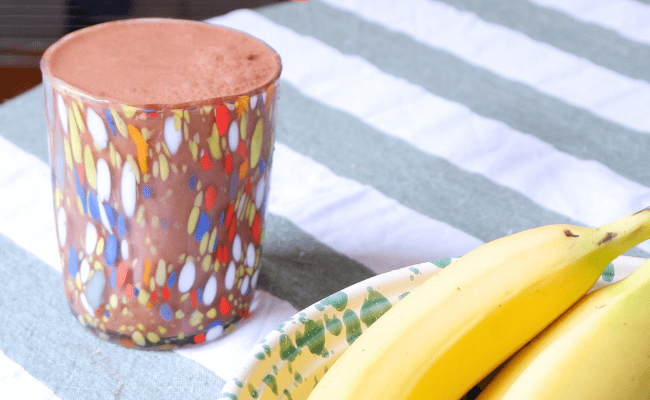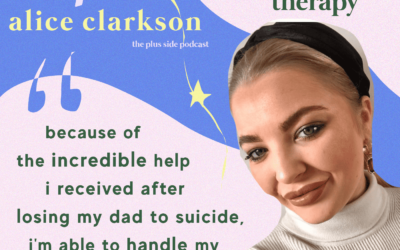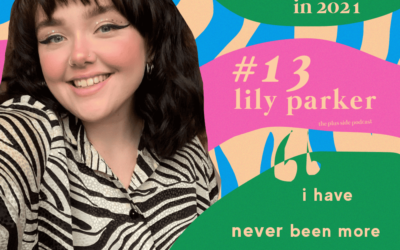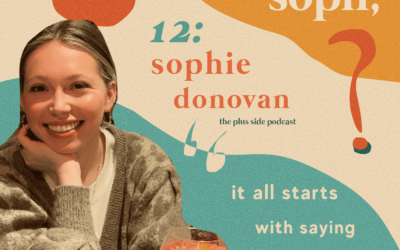In the week we saw today’s unrealistic body ideals reflecting those of the mid 2010’s ‘fit fixation’, are there still dustings of toxic residue on how we perceive protein now? For marketers, prioritising more neutral and informative messaging could be the key for seeing us out of progressive limbo. Here’s why.
Until recently, I’d always felt slightly intimidated by protein powders. ‘Get a grip’, you say? Stay with me. I have my reasons.
Firstly, it seems there is a misconception that if one was to partake in a protein regime, they would also need to be a deadlift professional with a long-term commitment to Weetabix cheesecakes. Cool for some, but not quite what I envisaged for me.
Secondly, there is an overwhelming amount of choice. Now, I’ll be the first to admit that I am an excruciatingly indecisive silly goose. The mere thought of choosing ‘the one’ from a shelf of eligible bachelor’s is more than enough to send me over.
When I took up barre and decided I had entered the new phase of my ✨wellness girlie✨ era, I couldn’t help but wonder,‘’Why, in 2023, am I still seeing protein in such a basic and stereotypical light?”
Curious to see whether the Gym Bro protein stigma sits in or out of the ‘cancelled’ bin (see also: cauliflower pizza, Gillian McKeith), I asked my Instagram* audience to gauge their thoughts on the matter. The goal? To unlock real-life insights, explore the current perceptions of protein, and begin to open a conversation about the ways both brands and influencers can pull their weight in the anti-diet movement.
What the polls revealed:
Do you currently take protein powder?
- 18% said yes, every day.
- 58% said no, they never have.
- 24% said occasionally, but only when they need it.
If yes, why do you take it?
- 30% said it was because they train a lot.
- 63% said it was because they struggle to eat enough protein through food.
How would you relate protein powders with weight?
- 64% said for weight loss.
- 12% said for weight gain.
- 23% said for weight maintenance.
Do you think protein powders are (still) a product of diet culture?
- 69% said yes.
- 31% said no.
Have you ever felt influenced when consuming potentially toxic social media content in relation to protein powders?
- 56% said yes.
- 44% said no.
What factors put you off protein powders?
- 28% said they’re too confused by the ingredients.
- 19% said they’re too costly.
- 8% said they’re too close to diet culture.
- 45% said all the above.
Are you conscious of your protein intake?
- 18% said yes, they have a daily goal.
- 32% said no, they’re not bothered.
- 50% said that they’re trying to get more balance.
Do you feel the messaging behind protein powders has changed with the anti-diet culture movement?
- 50% said yes.
- 50% said no.
Are you keen to try protein powder, but unsure on which is the best for your personal needs?
- 62% said yes.
- 38% said no.
AI AI, oh?
When eating disorder awareness platform, The Bulimia Project conducted an experiment to illustrate today’s idea of a ‘perfect’ man and woman, it doesn’t exactly take a robot to see that unattainable beauty standards are still very much alive and kicking. But what struck me most was that they are remarkably alike to the people behind countless protein ads we’ve seen time and time again. Interesting.
These AI generated images are based solely on the daily visuals we consume through social media, confirming the concerning link between the internet and poor body image – even during what is (supposedly) the most progressive year yet.
To give you a little context, the man is proudly showcasing what appears to be a 12 pack of rippled abdominal muscles along with a smug ‘smize’ that suggests he’s very pleased to be 80% veins and 20% eyebrows, thank you very much.
As for the woman? She’s giving privileged white Victoria Secret model, gazing blankly into the distance while showcasing a waist and rack ratio that rivals that of my seven-year-old self’s Barbie dolls.
Ground-breaking.
It’s me! Hi! I’m 2014!
For many millennials, these results – although tragic – come as no surprise. In a digital era of #FitGoals and knockoff Lindahl protein puddings, these are the visuals we have become well acquainted with.
It takes one quick flick through my explore feed before I’m greeted with a fitness influencer sharing their latest recipe for a ‘healthier’ protein brownie. The caption suggests that because it contains a scoop of triple-chocolate-salted-caramel-muffin protein powder (35g, to be exact), there’s no need to ever go back to the ‘regular’ kind again… not if you wanted to reach your daily protein goal, babe.
This felt distinctively reminiscent of the 2014 social trend, where ‘skinny’ was out (unless we’re talking about light wash denim) and ‘strong’ was in. Quite the contrast to previous decades’ ideals of size 0 models channelling the ‘heroin chic’ aesthetic, I think you’ll agree.
Soon enough, protein bars became the 90’s equivalent of a cigarette, the must-have accessory to give you social status.
What a tupper-mare
It’s important to note that this doesn’t necessarily mean that the body standards were set a single bar lower, or that they were any more attainable. Oh, no. To achieve this particular #StrongNotSkinny look, you needed to make sure you were following a gruelling workout plan and meal prepping a week’s worth chicken a la broccoli before you could triumphantly share your progress through templated before and after photos.
Your bowls of macro-friendly protein fluff would receive streams of likes; your PB2 rice cakes deemed ‘inspirational’. And if you really restricted yourself enough, your latest torso shot would give you the #Fitspo title you dreamed of during those 5am kettlebell swings.
There’s no denying that protein and push ups have their place in the world. I, for one, happen to be a regular visitor of both. But when your own happiness (and sanity) is compromised, when does this lifestyle reach its last lunge? Pushing yourself even further for the next endorphin hit can only end badly… but for many, that was – and still is – the harsh reality. We just don’t see it.
Movin’ on up
Fortunately, we’ve come a long way since *those* days. The online fitness realm makes a refreshing point of representing more a diverse range of body shapes, cultures, and backgrounds – with a noticeable uptick of fitness creators favouring unfiltered and unposed photos on their grids.
Campaigners have also made their mark in the anti-diet movement. Jameela Jamil’s I WEIGH account has accumulated over 1.2 million followers, all keen to see more neutrality amongst the nonsense. This positive work continues to unravel the misconceptions around what ‘health’ really is: individual, intuitive, inclusive.
And as 56% respondents said they had been directly influenced by tanned, long-limbed fitness coaches posing with a protein shake to reward an hour of squat thrusts (and not a bead of sweat to show for it… huh), these conversations are crucial for nurturing a healthier approach to body image. Not just for us, but for future generations, too.
Along with the activists, some brands are also starting to dip their scoops in the progressive waters; moving the pure focus away from weight loss and – big ick – ‘bulking’, and more towards being a convenient way support an overall balanced lifestyle. Considering 63% of people said they take protein supplements as they struggle to eat enough through food, and 50% said they’re trying to get more balance in their diets, this makes for a promising start.
Horror & Barrett x
Could more work be done to make protein more accessible for all? Absolutely.
I took a trip to Holland & Barrett yesterday (2 for 1 on toothpaste – run don’t walk). With room temperature banana shakes rather boldly claiming to be ‘food’ and a poster of a hench model baring his biceps mid swig, I can confirm the protein section still exudes the same male dominated energy that you’d typically expect. Side note: who’s going to tell the marketers that the Hulk pose no longer serves? Anyone?
The woman’s noticeably smaller column (!) consisted of ‘Slender Blender’ weight loss and vanilla ice cream meal replacement drinks. While 64% of people said they use protein for weight loss purposes, the dated Slim-Fast-Loose-Women-Count-Your-Syns persona needs to go. Nothing about that arrangement felt accidental nor coincidental; quite the opposite, in fact. They reside in their designated sad little space, far away from the crystallised ginger and yoghurt coated peanuts. It’s where they’ve always been. Sigh.
We appear to be stuck in a progressive limbo, lingering halfway between disordered fixations and blissful freedom. In the great words of Lizzo, ‘it’s about damn time’ more brands stepped up to the challenge of getting us out of it. Those who do will be rewarded with a trusted, loyal audience (and perhaps even a free toothpaste, on me).
(Informational) content is King
You may notice a common trend running throughout the poll responses: a strawberry shortcake flavoured essence of intrigue. Whether they’re an avid protein consumer or not – people are, on some level, curious. And with the global protein market expanding faster than a Joe Wicks HIIT workout, it’s really no wonder.
According to the latest PR Newswire report, the global protein supplement market is predicted to grow to around 32.56 billion by 2028, with an annual growth rate of 9.39% between now and then. That’s an awful lot of Grenade bars.
Yet amongst the reels of Gym Shark’s sinking their jaws into (low-sugar) Snickers bars, it could be said there’s still a widening information gap yet to be closed. Google’s most frequently asked questions about protein powder suggest that we’re turning to our trusty friend, the search bar for answers – whether it’s relating to the health benefits, the usage, or the actual need for them.
The below is just the tip of the icepack:
- What are the benefits of protein powder?
- Should you actually use protein powder?
- How much protein do I need a day?
- Are protein shakes bad if you don’t work out?
- What are the pros and cons of protein powder?
- Is protein powder good for weight loss?
Blurred liiines
Protein powders are hard to avoid in today’s modern world. Whether it’s influencers, celebrities or your friends who use the stuff – it’s easy to slip into the idea that you need it in your life, too. But given the fact that it doesn’t exactly come cheap and many have a lengthy ingredients list that requires its own dictionary (cost and confusion were common off-putting factors according to the poll), you can’t blame people for doing their research first.
Claire Shaw, founder of protein brand Roots n Shoots, shared her views on this. ”Many brands hide the fact that their powders contain E numbers by using the full version of the E number name. Essentially, consumers need to educate themselves on what makes a protein powder ‘healthy’, rather than relying on what brands tell them.”
So, do more brands need to change their messaging to be less performative, and more informative? Probably – however some are already paving the way.
Take women’s protein powder brand, Free Soul. Through authentic UGC, it works with relatable creators throughout its ad campaigns to thoughtfully guide audiences on what the product contains, what its benefits are, and how it can easily be incorporated into a woman’s daily routine. Perhaps it’s the fact it uses ‘real people’ in targeted campaigns, or maybe it’s more because it has a clear purpose behind its products that drives the brand’s ongoing success.
Listen, if drinking chocolate protein means you can work up social strategies as faultless as that, you can sign me right up.
Oh, for FAD sake
Meanwhile, many remain sceptical about protein being just another marketing buzzword to tempt hungry consumers. Amy said, ‘’I personally think protein has become a way for companies to make money, as it’s created a whole new market for weight loss – and not necessarily about nutrition.’’
It seems audiences are becoming savvier at spotting FADs than ever before. We’re used to seeing trends come and go – particularly when it comes to diet products. Jasmine agreed, ‘’There’s been a massive rise in products with added protein, like yoghurts, ice cream and chocolates. That really annoys me, as people think a chocolate pudding with the extra protein is better – whereas you can have something like kefir which is probably healthier and contains a similar amount of protein.’’
For decades, we’ve seen the diet industry reveal countless (supposed) revolutions – many of which consistently favour protein as the hero nutrient. Think back to the infamous low carb Atkin’s diet, or the meaty ‘eat as the cavemen would’ Paleo theory. Yaba-daba-do I think protein will be leaving the chat anytime soon? No, and I don’t see why it should. I’ll tell you why.
Virtual neutrality
While it’s important to raise awareness that protein is kind of essential for bodily function, it might be nice if someone more approachable than the bootcamp sergeant I imagine to be current voice of Protein™️ (‘’SHAKE! DRINK! NOW GIVE ME 100 PUSH UPS!!!’’) could tell us. Like, say, Jonathan Van Ness or Mirium Margoyles*.
There’s no denying that protein products make for a tasty, convenient and well-balanced snack – especially if you didn’t fancy noshing on Fred Flintstone’s steak for lunch. But as far I’m concerned, the sooner food brands and fitness influencers quit marketing them as a ‘guilt free’, ‘healthier’ option than its regular contenders, the better.
Satisfaction, pleasure, and enjoyment are equally as important as consuming a well-balanced diet that hits the ol’ micronutrients. Some days, the convenience of a protein flapjack is exactly what you want to fuel those ‘hangover hikes’ you soon regret agreeing to.
Other days, you might find that there is nothing more nourishing than a generous slab of Grandma’s freshly baked coffee and walnut cake to accompany a bottomless pot of Yorkshire tea.
The point is, neither of these options are ‘good’ or ‘bad’. They are both perfectly valid in their own snackable way. So, instead of shameful labelling, let’s celebrate the freedom of choice… simply because we can. Isn’t that what makes life sweet?
*Brb, off to make a brand ambassador pitch for Huel.
So, what are the takeaways?
Despite great improvements, further work needs to be done to break the protein stigma.
- Including a more diverse representation of ‘real’ people throughout social media and ad campaigns is crucial for building a more positive approach to body image.
- A gentler tone of voice and a more personable brand identity can help reinforce that protein is an open choice for everyone – and not just for the Gym bros.
- With no signs of the protein ‘buzzword’ disappearing anytime soon, consumers are curious enough to do their own research on the topic. It’s up to brands to provide unbiased, informative, and accurate guidance on how their products may (or may not) work for them.
- Creators need to factor in the importance neutral messaging to tackle problematic food labelling, and take responsibility for the influence they have on their audiences.
- Toothpaste offers simply must be taken advantage of.






0 Comments